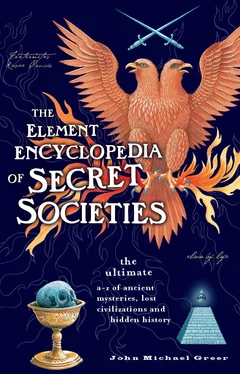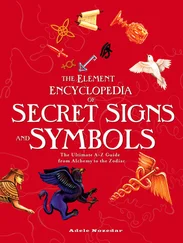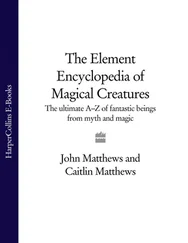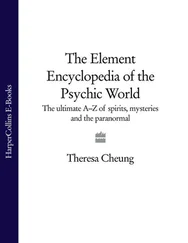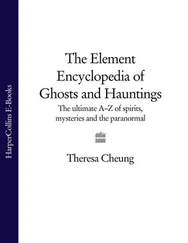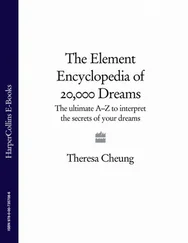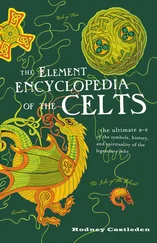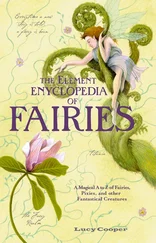Syria at that time was divided between the Crusader kingdoms to the south and a Sunni Muslim kingdom centered on Aleppo in the north, and Sinan played these off against each other to maintain his own independence. When the great Arab general Saladin (Salah al-Din al-Ayyubi, 1138–93) took power in Aleppo, Sinan responded by ordering his death, but by this time Arab rulers had begun to learn Assassin ways and Sinan’s agents failed twice. He was more successful against Conrad of Montferrat, King of Jerusalem, who was cut down by two Assassins in 1192. Against the Knights Templar, who owned several large castles in southern Syria and had copied many elements of Assassin discipline, Sinan was more circumspect, and at one point paid them a yearly tribute of 2000 pieces of gold to keep them at bay. See Knights Templar.
After Sinan’s time, the Assassins moved away from their sectarian roots and became an organization of hired knives who killed for money. Like the rest of the Arab world, they were fatally unprepared for the arrival of the Mongol armies in the middle of the thirteenth century. The threat of assassination meant nothing to the Mongols, who responded to the least resistance by slaughtering entire populations. Faced with these tactics, Alamut surrendered to the Mongol warlord Hulagu Khan in 1256. The Syrian branch of the order dissolved not long afterwards, and most of its members entered the service of the Sultan of Egypt as hired killers.
Further reading: Mackenzie 1967.
One of the most important theories of comparative religion from the late eighteenth to the early twentieth century, the theory of astronomical religion argued that all religions – or rather, in most versions, all religions but Judaism and Christianity – developed out of early humanity’s awe and wonder at the sun and the night-time sky. According to the theory, the gods and goddesses of pagan religions are simply poetic ways of talking about the sun, moon, planets, and seasonal phenomena on the surface of the earth. A good deal of evidence supports the idea that at least some religious thought has astronomical roots; it’s not an accident, after all, that people in the western world still call the planets by the names of old gods.
The theory of astronomical religion has taken at least four standard forms, all of which have left their traces on secret societies and the secret history of the western world. One form is solar religion, the idea that ancient religion and mythology focused on the interactions between sun and earth in the cycle of the seasons. Another is planetary religion, the idea that ancient religion and mythology focused on the movement of the seven traditional planets (the sun, moon, Mercury, Venus, Mars, Jupiter, and Saturn) against the background of the stars. A third is precessional religion – the idea that ancient religion and mythology focused on the precession of the equinoxes, a vast slow wobble in the earth’s movement that shifts the seasonal stations of the sun slowly backwards against the stars, and points the earth’s poles toward different pole stars in a 25,920-year cycle. The fourth form is catastrophic religion, the idea that ancient religion and mythology focused on the memory of a series of vast cosmic disasters caused by comets or roving planets. All four of these offer intriguing and sometimes compelling explanations of certain myths, and none of them necessarily conflict with the others – it is entirely plausible that different myths might be talking about different heavenly events, after all.
Still, in the scholarly debates of the late nineteenth century, each version of astronomical theory – like most theories of comparative religion – was taken to extremes and turned into a supposed universal key to all mythologies. One of the most comprehensive examples was the “solar theory” of Max Müller (1823–1900), who was among the greatest philologists of the late nineteenth century and a major player in the struggles over myth’s meanings during that era. Müller argued that all mythology, everywhere, retold the story of the seasonal cycle; all gods were solar and meteorological phenomena associated with the seasons, while all goddesses symbolized the earth and its changing vegetation. Müller’s theory was widely accepted until it was demonstrated, a few years after his death, that by his own criteria Müller himself could be proved to be a sun god.
Long before this, however, the theory of astronomical religion found a home in the underworld of nineteenth-century secret societies. The rebirth of European paganism in the 1790s at the hands of Thomas Taylor, the great English Neoplatonist and translator of Greek texts, made pagan religious traditions increasingly attractive to nineteenth-century intellectuals, who saw them as a humane and psychologically healthy alternative to the stultifying Protestantism of the Victorian era. Druid secret societies in particular borrowed heavily from the astronomical theory and its major competitor, the theory of fertility religion, as raw material for their reconstructions of ancient Celtic spirituality. See Druid Revival.
This process was paralleled by a movement within Freemasonry, especially (but not only) in America, that interpreted the Masonic Craft as a descendant of the ancient pagan mysteries and drew on the astronomical theory to reinvent Freemasonry as a spirituality for thinking men. Masonic writers such as J.D. Buck and E. Valentia Straiton argued that every aspect of Masonic symbolism could be traced back to ancient mystery cults, a theme that also influenced Albert Pike, Grand Commander of the southern US jurisdiction of the Scottish Rite, in his revision of the Rite’s rituals and the compilation of his sprawling Masonic sourcebook Morals and Dogma (1871). The spread of these ideas among a minority of Masons predictably ended up being used in the late twentieth century by Christian fundamentalists to claim that all of Freemasonry was a Satanic cult. See Antimasonry; Freemasonry; Pike, Albert.
The popularity of the astronomical theory of religion peaked around 1900, however, and thereafter it quickly fell from favor as psychological and social theories rose to prominence. Since then the first three versions of the theory mentioned above have had a dwindling role in the world of secret societies as well, though substantial traces can still be found in some concordant bodies of Masonry, in the older Druid orders, and in a few other occult secret societies with older roots. The one survivor is the theory of catastrophic religion, which came back into vogue in the late twentieth century and now feeds into alternative visions of approaching earth changes and ages of the world. See ages of the world; earth changes.
Further reading: Godwin 1994.
American occultist, author, and secret society member. One of the leading figures in the occult scene in turn of the century America, Atkinson (1862–1932) was born to middle-class parents in Baltimore, Maryland and took up a business career, then studied law. In the late 1890s, however, his health broke down as a result of stress, and he turned to the New Thought movement in the hope of a cure. By 1900 Atkinson had completely recovered, and moved to Chicago to take up a position as an editor at New Thought magazine. A few years later, turning his business skills to a new purpose, he founded the Atkinson School of Mental Science and began publishing books on New Thought under his own name, books on yoga under the pen name Yogi Ramacharaka, and books on mental magnetism and occultism under the name of Theron Q. Dumont.
Atkinson soon became a leading figure in the Chicago occult community. In 1907 he was contacted by the young occultist Paul Foster Case, and the two began an extensive correspondence that lasted until the end of Atkinson’s life. Sometime before 1907 Atkinson also became a member of the Chicago temple of the Alpha et Omega, the largest American branch of the Hermetic Order of the Golden Dawn, and probably also joined the Societas Rosicruciana in America (SRIA), then closely affiliated with the Alpha et Omega. Together with Case and Michael Whitty, Atkinson wrote The Kybalion (1912), one of the classic works of American occult philosophy. The three concealed their authorship under the anonymity of the name “Three Initiates.” See Case, Paul Foster; Hermetic Order of the Golden Dawn; Societas Rosicruciana in America (SRIA).
Читать дальше
